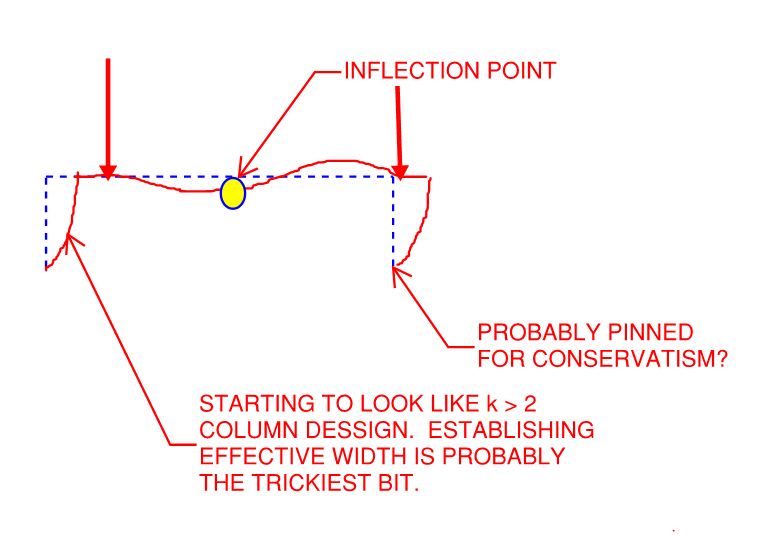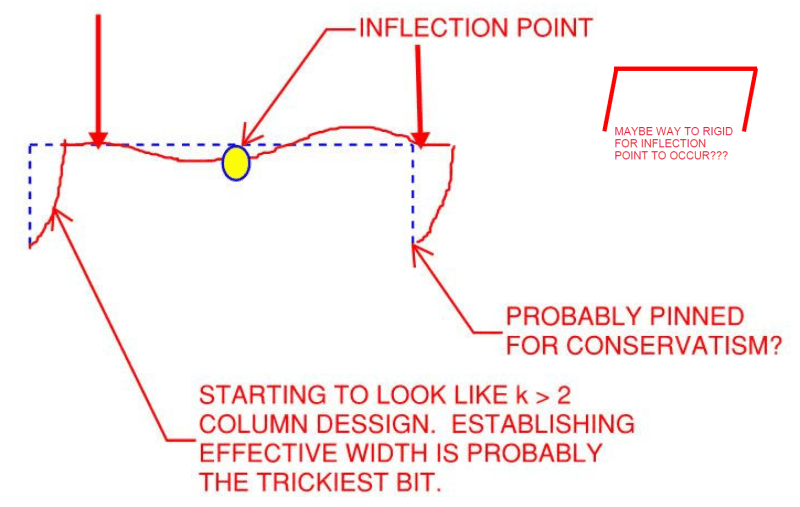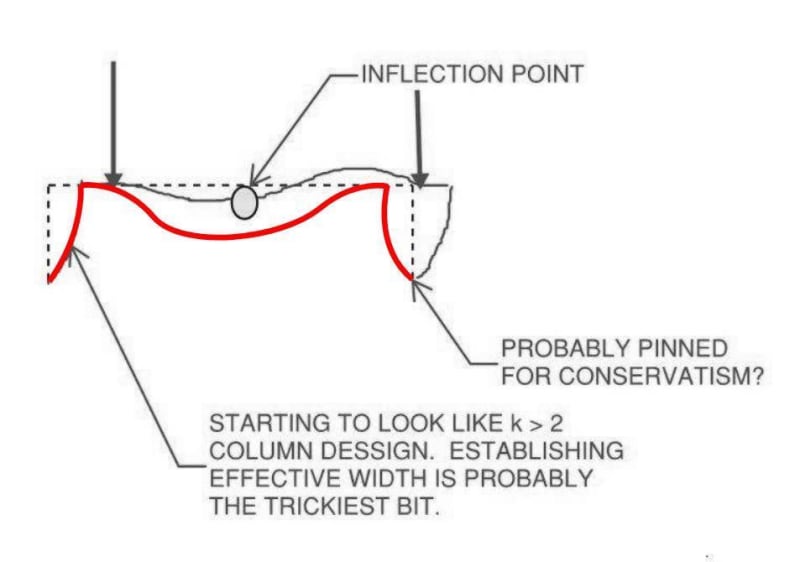HI Everyone,
For anyone familiar with both AISC and CISC. I have a question.
Table 8-4 of AISC gives the coefficient C for eccentrically loaded weld groups (out of plan force and at an angle of 45 degrees).
I looked in CISC and could not find a similar table. The closest i could find was table 3-27 but it's for in-plan eccentric vertical load).
Did i miss something? what is recommended to do in this case?
Thanks
For anyone familiar with both AISC and CISC. I have a question.
Table 8-4 of AISC gives the coefficient C for eccentrically loaded weld groups (out of plan force and at an angle of 45 degrees).
I looked in CISC and could not find a similar table. The closest i could find was table 3-27 but it's for in-plan eccentric vertical load).
Did i miss something? what is recommended to do in this case?
Thanks



